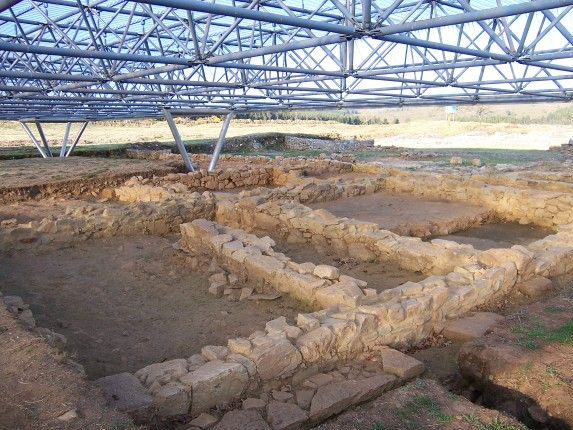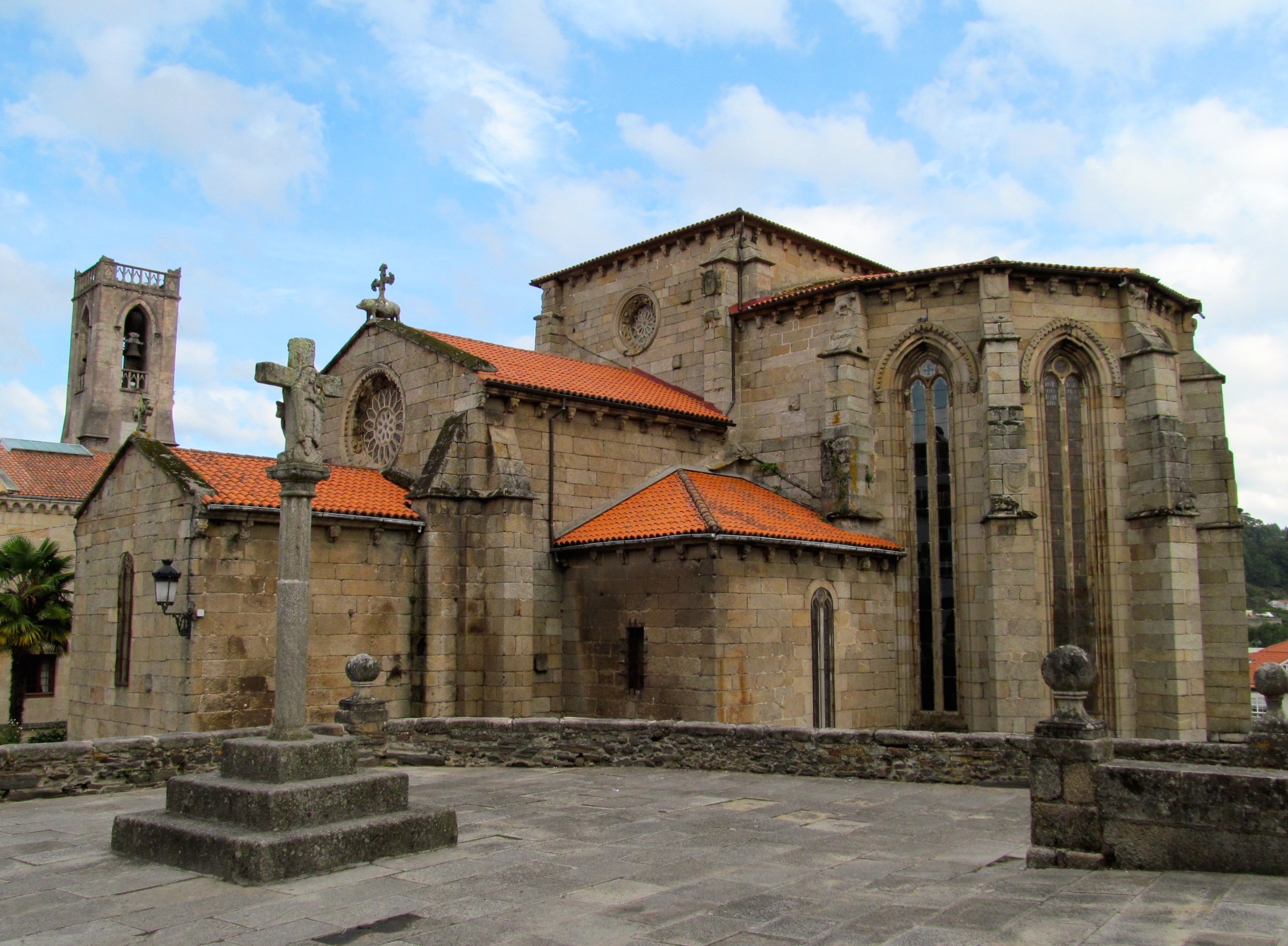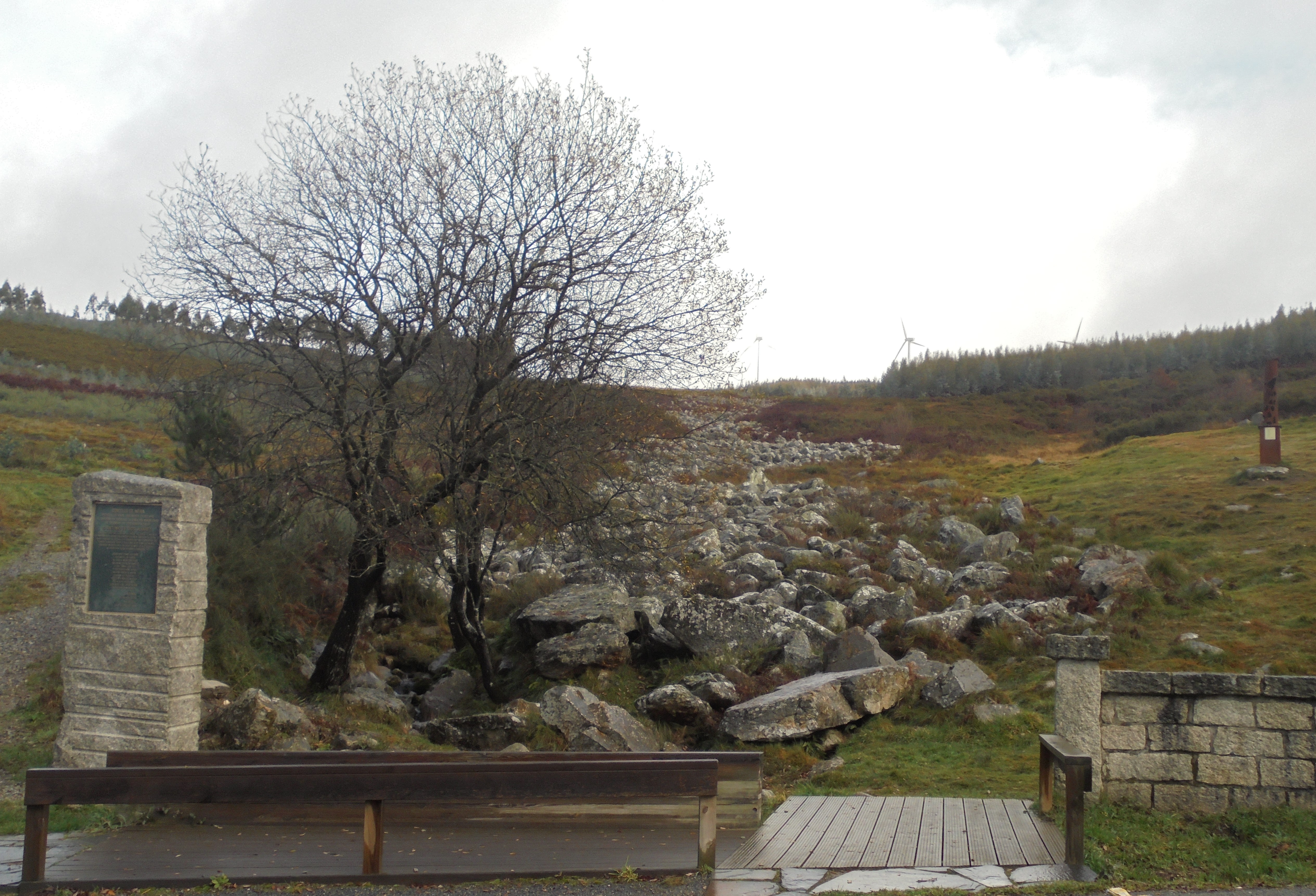|
Bermudo Pérez De Traba
Bermudo Pérez de Traba (died 1168), the eldest son of Count Pedro Fróilaz de Traba and his first wife Urraca Fróilaz, was a member of the most important medieval lineage in Galicia. He governed as a '' tenente'' Trastámara, Faro (A Coruña), Viseu, and Seia, owned vast estates in his native land, and was a generous patron of religious institutions. Biographical sketch Bermudo was never honored with the title of count, although he was an important magnate and appears in charters signing as ''dominus'' (Latin for "lord") and also as ''Vermudo Petriz Galleciae'' ("Bermudo Pérez of Galicia"). His presence in medieval documentation is first recorded on 1 April 1104 when, with his brother, Count Fernando Pérez de Traba, he made a donation to the Monastery de San Xoán de Caaveiro. He was a vassal of Queen Urraca of León and, with his brothers, swore his loyalty to her son Alfonso VII upon his ascension to the throne of the Kingdom of León in Zamora. On 29 July 1118, Quee ... [...More Info...] [...Related Items...] OR: [Wikipedia] [Google] [Baidu] |
Pedro Fróilaz De Traba
Pedro Fróilaz de Traba (''fl.'' 1086–1126) was the most powerful secular magnate in the Kingdom of Galicia during the first quarter of the twelfth century. According to the '' Historia compostelana'', he was "spirited ... warlike ... of great power ... a man who feared God and hated iniquity," for Diego Gelmírez himself had "fed him, like a spiritual son, with the nutriment of holy teaching."Fletcher (1984), 37–38. Brought up at the court of the Emperor Alfonso VI, Pedro raised the future Emperor Alfonso VII in his household. Around the latter he and Diego formed a "Galician party" that dominated that region during the turbulent reign of Urraca (1109–26). In September 1111 they even had the child Alfonso crowned king at Santiago de Compostela, but it was Pedro who was ''imperator in orbe Galletiae'' ("emperor in the ambit of Galicia"). Widely travelled and well-connected, especially through the prestigious marriages of his many daughters—he had at least sixteen legiti ... [...More Info...] [...Related Items...] OR: [Wikipedia] [Google] [Baidu] |
Ferdinand I Of León And Castile
Ferdinand is a Germanic name composed of the elements "protection", "peace" (PIE "to love, to make peace") or alternatively "journey, travel", Proto-Germanic , abstract noun from root "to fare, travel" (PIE , "to lead, pass over"), and "courage" or "ready, prepared" related to Old High German "to risk, venture." The name was adopted in Romance languages from its use in the Visigothic Kingdom. It is reconstructed as either Gothic or . It became popular in German-speaking Europe only from the 16th century, with Habsburg rule over Spain. Variants of the name include , , , and in Spanish, in Catalan, and and in Portuguese. The French forms are , ''Fernand'', and , and it is '' Ferdinando'' and in Italian. In Hungarian both and are used equally. The Dutch forms are and '' Ferry''. There are numerous short forms in many languages, such as the Finnish . There is a feminine Spanish, Portuguese and Italian form, . Royalty Aragón/León/Castile/Spain *Fer ... [...More Info...] [...Related Items...] OR: [Wikipedia] [Google] [Baidu] |
Pilgrimage
A pilgrimage is a journey, often into an unknown or foreign place, where a person goes in search of new or expanded meaning about their self, others, nature, or a higher good, through the experience. It can lead to a personal transformation, after which the pilgrim returns to their daily life. Background Pilgrimages frequently involve a journey or search of moral or spiritual significance. Typically, it is a journey to a shrine or other location of importance to a person's beliefs and faith, although sometimes it can be a metaphorical journey into someone's own beliefs. Many religions attach spiritual importance to particular places: the place of birth or death of founders or saints, or to the place of their "calling" or spiritual awakening, or of their connection (visual or verbal) with the divine, to locations where miracles were performed or witnessed, or locations where a deity is said to live or be "housed", or any site that is seen to have special spiritual power ... [...More Info...] [...Related Items...] OR: [Wikipedia] [Google] [Baidu] |
Hermenegildo Alóitez
Hermenegildo Alóitez ('' c.'' 898 – before 10 December 966), was a magnate and member of the highest nobility of Galicia in the 10th century. His parents were Count Aloito Gutiérrez and Argilo Alóitez, daughter of Alóito and Paterna, the founders of the in the territory of Nendos, A Coruña. Biographical sketch Hermenegildo came from a prominent family with ties to the crown and church. A paternal uncle was Count Hermenegildo Gutiérrez, who defeated the Muslim troops and conquered Oporto and Coimbra and was the father of Queen Elvira Menéndez, wife of King Ordoño II, and grandfather of Saint Rudesind, of Queen Adosinda Gutiérrez, the first wife of King Ramiro II, and of Count Osorio Gutiérrez the founder of the Monastery of Lourenzá. A Count Osorio, the other grandfather of Queen Adosinda and Count Osorio Gutiérrez, has been identified as another uncle. He had three brothers; Gundesindo Alóitez, Bishop of Iria Flavia, Arias, and Count Gutierre Alóitez. ... [...More Info...] [...Related Items...] OR: [Wikipedia] [Google] [Baidu] |
Cistercian
The Cistercians, () officially the Order of Cistercians ( la, (Sacer) Ordo Cisterciensis, abbreviated as OCist or SOCist), are a Catholic religious order of monks and nuns that branched off from the Benedictines and follow the Rule of Saint Benedict, as well as the contributions of the highly-influential Saint Bernard of Clairvaux, known as the Latin Rule. They are also known as Bernardines, after Saint Bernard himself, or as White Monks, in reference to the colour of the "cuculla" or cowl (choir robe) worn by the Cistercians over their habits, as opposed to the black cowl worn by Benedictines. The term ''Cistercian'' derives from ''Cistercium,'' the Latin name for the locale of Cîteaux, near Dijon in eastern France. It was here that a group of Benedictine monks from the monastery of Molesme founded Cîteaux Abbey in 1098, with the goal of following more closely the Rule of Saint Benedict. The best known of them were Robert of Molesme, Alberic of Cîteaux and the Engl ... [...More Info...] [...Related Items...] OR: [Wikipedia] [Google] [Baidu] |
Sobrado, Galicia
Sobrado is a municipality in the Spanish province of A Coruña located in the northwest of Spain in the autonomous community of Galicia. It has a population of 2,087 (Spanish 2011 Census) and an area of 121 km². Sobrado is well known because of Sobrado Abbey, a Trappist monastery. The town is known by the name Sobrado dos Monxes in Galician or Sobrado de los Monjes in Spanish but the official name is just Sobrado. Geography Demographics Climate and vegetation The town of Sobrado, in its climatic characteristics (temperatures, precipitation, humidity, hours of direct sunlight) has a climate characteristic of the European Atlantic that means wet and cool, with heavy rainfall due to greater latitude within the autonomous region and the dorsal Galician screen acting for the Atlantic storms that discharge heavy rains on this side, approaching the annual average 1,400 mm. Temperatures are a little more extreme, the result of the recession of the coastline and i ... [...More Info...] [...Related Items...] OR: [Wikipedia] [Google] [Baidu] |
Battle Of Valdevez
The Battle of Valdevez ( pt, Torneio de Arcos de Valdevez) took place at Arcos de Valdevez on the banks of the river Vez between the Kingdom of León and the Kingdom of Portugal in the summer of 1140 or 1141. It is one of only two pitched battles that Alfonso VII of León is known to have fought, and the only of the two not coincident with a siege. His opponent at Valdevez was his cousin Afonso I of Portugal. An armistice signed after the battle eventually became the Treaty of Zamora (1143), and ended Portugal's first war of independence. The area of the battle became known as the ''Veiga'' or ''Campo da Matança'', the "field of killing". Course of the conflict At the start of Alfonso VII's reign, Afonso of Portugal was his heir presumptive. The subsequent birth of two sons to Alfonso VII, the future kings Sancho III and Ferdinand II, and the geographic distance between Afonso's Portuguese power base and the Crown's, probably convinced Afonso to rebel in contravention of the T ... [...More Info...] [...Related Items...] OR: [Wikipedia] [Google] [Baidu] |
Chronicon Lusitanum
The ''Chronicon Lusitanum'' or ''Lusitano'' (also ''Chronica Lusitana'' or ''Chronica/Chronicon Gothorum'') is a chronicle of the history of Portugal from the earliest migrations of the Visigoths (which it dates to 311) through the reign of Portugal's first king, Afonso Henriques (1139–85). The entries in the chronicle, ordered by year and dated by the Spanish Era, get increasingly longer and the majority of the text deals with the reign of Afonso. The conventional title of the chronicle means " Lusitanian (i.e. Portuguese) chronicle" or "chronicle of the Goths". It was first given by the editor Enrique Flórez, who rejected the title under which it had previously been edited (''Gothorum Chronica'') because of its subject matter. Flórez also claims that the manuscript of the ''Chronicon'' had previously been utilised by André de Resende, the first archaeologist of Portugal, and , the first journalist of Portugal; it was also edited in the third volume of the ''Monarchia Lusit ... [...More Info...] [...Related Items...] OR: [Wikipedia] [Google] [Baidu] |
Betanzos
Betanzos () is a municipality in the autonomous community of Galicia in northwestern Spain in the province of A Coruña. It belongs to the comarca of Betanzos. In Roman times Betanzos was called Flauvium Brigantium or ''Brigantium''. During the Medieval period the settlement was known as ''Carunio''. The town is located in a fertile valley close to the Atlantic Ocean, and it has one of the best preserved old quarters in Galicia. Noteworthy is the Igrexa de San Francisco (St Francis Church), erected in 1387 by order of count Fernán Pérez de Andrade, whose tomb, decorated with hunting scenes, is inside of the church. The Igrexa de Santiago (St James Church), built in the 15th century by the guild of tailors, has a main portal decorated with a horseback statue of Saint James. The town is on the English Way path of the Camino de Santiago The Camino de Santiago ( la, Peregrinatio Compostellana, "Pilgrimage of Compostela"; gl, O Camiño de Santiago), known in English as the ... [...More Info...] [...Related Items...] OR: [Wikipedia] [Google] [Baidu] |
Nendos
Nendos or Nemitos was the name of a historic Galician county in northern Galicia. Its existence is documented from the 6th century in the Suebic Kingdom of Galicia, but due to its etymology, -derived from the Celtic name ''Nemeton'', there are insidious of its existence in pre-Roman times. Nendos is still an ecclesiastical province An ecclesiastical province is one of the basic forms of jurisdiction in Christian Churches with traditional hierarchical structure, including Western Christianity and Eastern Christianity. In general, an ecclesiastical province consists of sev ... in Galicia. Kingdom of the Suebi {{Spain-hist-stub ... [...More Info...] [...Related Items...] OR: [Wikipedia] [Google] [Baidu] |
Minho River
The Minho ( , ) or Miño ( , , ; cel-x-proto, Miniu) is the longest river in Galicia, sharing the border with Portugal, with a length of . By discharge, it is the fourth river of the Iberian peninsula, after the Douro, Ebro, and Tagus. The Minho waters vineyards and farmland, is used to produce hydroelectric power, and also delineates a section of the Spanish– Portuguese border. In ancient English maps, it appears as Minno. The source of the Minho lies north of Lugo in Galicia, in a place called ''Pedregal de Irimia''. After about , the river passes just south of the walls of this old Roman city, discharging in average 42 m3/s, and flows south through canyons until the valley widens north of Ourense. The river has been harnessed in reservoirs from Portomarín to Frieira. Along its length, it has the following reservoirs: Belesar with , Peares with , Velle with , Castrelo with and Frieira with . About north of Ourense at Os Peares, the Minho, with a discharge of 102 ... [...More Info...] [...Related Items...] OR: [Wikipedia] [Google] [Baidu] |
Afonso I Of Portugal
Afonso I of PortugalOr also ''Affonso'' (Archaic Portuguese-Galician) or ''Alphonso'' ( Portuguese-Galician) or ''Alphonsus'' (Latin version), sometimes rendered in English as ''Alphonzo'' or ''Alphonse'', depending on the Spanish or French influence. (; born 1106, 1109 or 1111; died 1185), also called Afonso Henriques, nicknamed the Conqueror ( pt, O Conquistador) by the Portuguese, and ''El-Bortukali'' (in Arabic "the Portuguese") and ''Ibn-Arrink'' or ''Ibn Arrinq'' (in Arabic or "son of Henry", "Henriques") by the Moors whom he fought, was the first king of Portugal. He achieved the independence of the County of Portugal, establishing a new kingdom and doubling its area with the ', an objective that he pursued until his death. Afonso was the son of Teresa of León and Henry of Burgundy, rulers of the County of Portugal. Henry died in 1112, leaving Theresa to rule alone. Unhappy with Theresa's romantic relationship with Galician Fernando Pérez de Traba and his poli ... [...More Info...] [...Related Items...] OR: [Wikipedia] [Google] [Baidu] |





